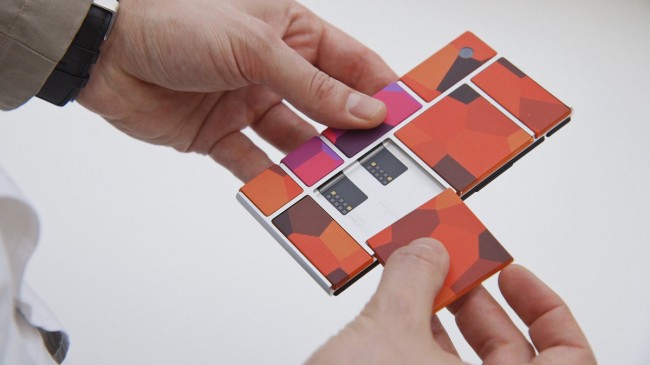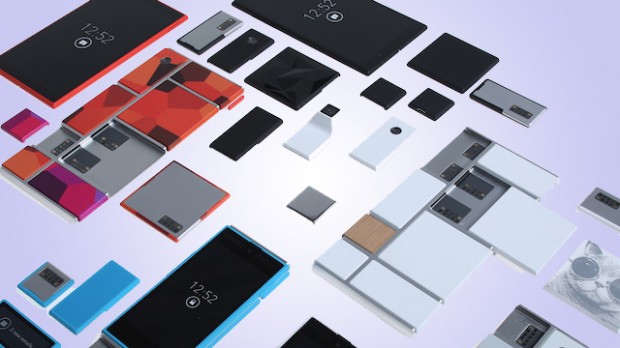Project Ara Modular Smartphone Will Have Hot-Swappable Modules
Project Ara director Paul Eremenko recently announced at a Linaro conference that the Ara platform will be able to hot-swap almost any component with the exception of the CPU and display. That includes the memory, storage, battery, camera, WiFi/cellular module or whatever any other module an Ara user may have. Linaro, a non-profit, helped the Ara team make the modules hot-swappable.
Because Project Ara is a completely modular device, you will be able to switch all of its components for new and improved ones without having to buy a new phone, as everyone does now. If you need the highest-end mobile processor out there, for example, you can just buy that processor module and upgrade the handset with it.
Or if you want a 40 MP camera like the one we saw in the Pureview 808 and Lumia 1020, you could also get that (as long as there’s a component manufacturer offering that option). The same goes for battery, storage, memory, new WiFi technology and so on. Ara will be infinitely customizable, which should make for some interesting devices, not just from a feature point of view, but from a design point of view, as well.
If Project Ara is successful, having truly customizable phones could be just the beginning. The project could evolve in unforeseen ways beyond just smartphones; we could see components that are specifically made for work in hospitals and aid doctors in treating patients, for example.
Ara may start as a modular smartphone, but it’s ultimately a blank-slate electronic platform that could turn into different kind of devices.
Paul Eremenko also said that Ara will be using a modified version of Android L in order to support the hot-swappable components, which will be available in a store similar to the Play Store. Project Ara devices should arrive on the market early next year.
Follow us @tomshardware, on Facebook and on Google+.
Get Tom's Hardware's best news and in-depth reviews, straight to your inbox.
Lucian Armasu is a Contributing Writer for Tom's Hardware US. He covers software news and the issues surrounding privacy and security.
-
dwatterworth Remember when phones had removable battery covers that would fly off along with the battery when the device was dropped? Now add each component to that. 'Today was a good day, I only had to rebuild my phone 6 times!'.Reply
Love the idea, maybe some small lockable retention device is included? -
zdaggs did this guy (Armasu) even read his own article or am I missing something. the first paragraph states the cpu is not swappable then he goes on to state in the second paragraph" If you need the highest-end mobile processor out there, for example, you can just buy that processor module and upgrade the handset with it".Reply
the main reason I switch phones would be for the newer processors. I don't care about switching my wifi adapter. new ram or camera would be nice but my phone already lets me switch battery and storage. -
Gunbuster I wonder how long the Project Ara dev team is going to milk their slick CG renders and dummy mock ups conveniently zoomed out so you cant see how terrible they look?Reply
When this comes out (If it does) it will be running outdated components, come in way over price, and still be chunky as hell. -
Augray37 Replydid this guy (Armasu) even read his own article or am I missing something. the first paragraph states the cpu is not swappable then he goes on to state in the second paragraph" If you need the highest-end mobile processor out there, for example, you can just buy that processor module and upgrade the handset with it".
the main reason I switch phones would be for the newer processors. I don't care about switching my wifi adapter. new ram or camera would be nice but my phone already lets me switch battery and storage.
+1 I realize people make mistakes but yikes.
And i wholeheartedly agree that the CPU is really the main thing i would care about swapping out, with the screen being a close second lol. Oh well, gotta start somewhere :P -
MKBL zdaggs/Augray37: The write didn't say that CPU is not swappable, rather, not hot-swappable.Reply
"the Ara platform will be able to hot-swap almost any component with the exception of the CPU and display."
This suggests that you may swap the processor module when the system power is off, so cold-swappable. -
coffeecoffee @dwatterworth Third party or OEM skins/covers can help, further more a device like this SHOULD definitely come with some sort of locking mechanism. (At least any competent engineer would include it).Reply
We can only assume the writer made a mistake by using a poor example... he should of just used a camera/battery example... -
MKBL Probably majority of Ara users will be forced to purchase phone cases, not just for protection, but also as a holding mechanism. This is a good news for case companies, if Ara will be a success, which I doubt.Reply

